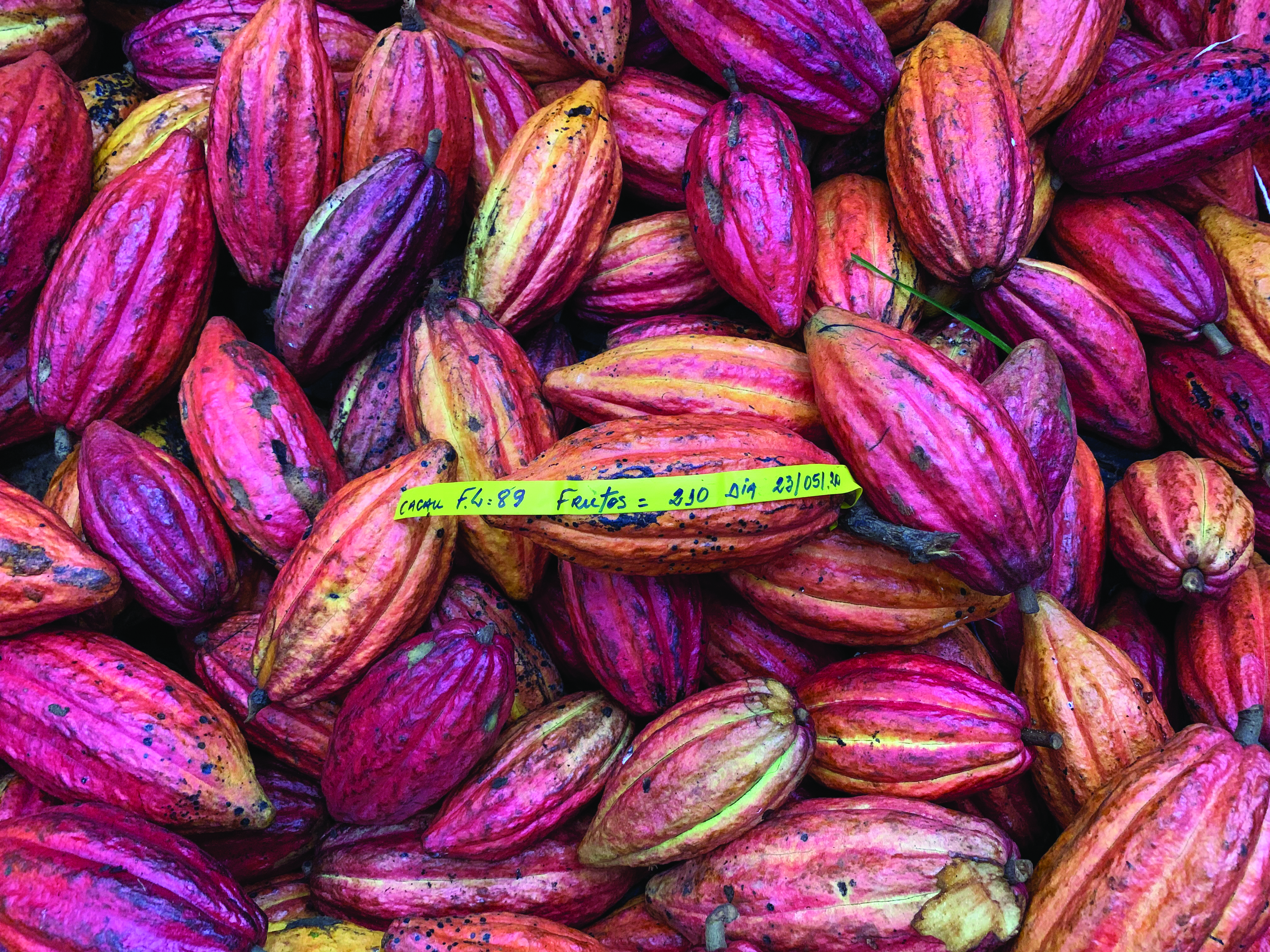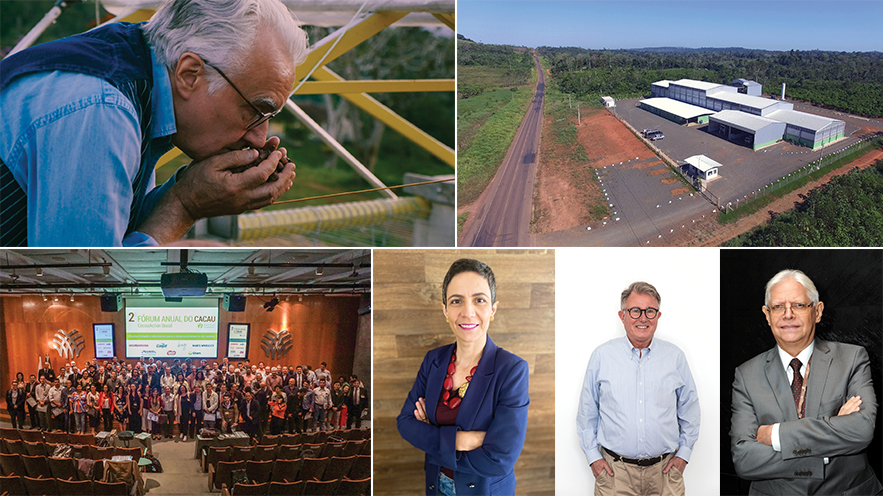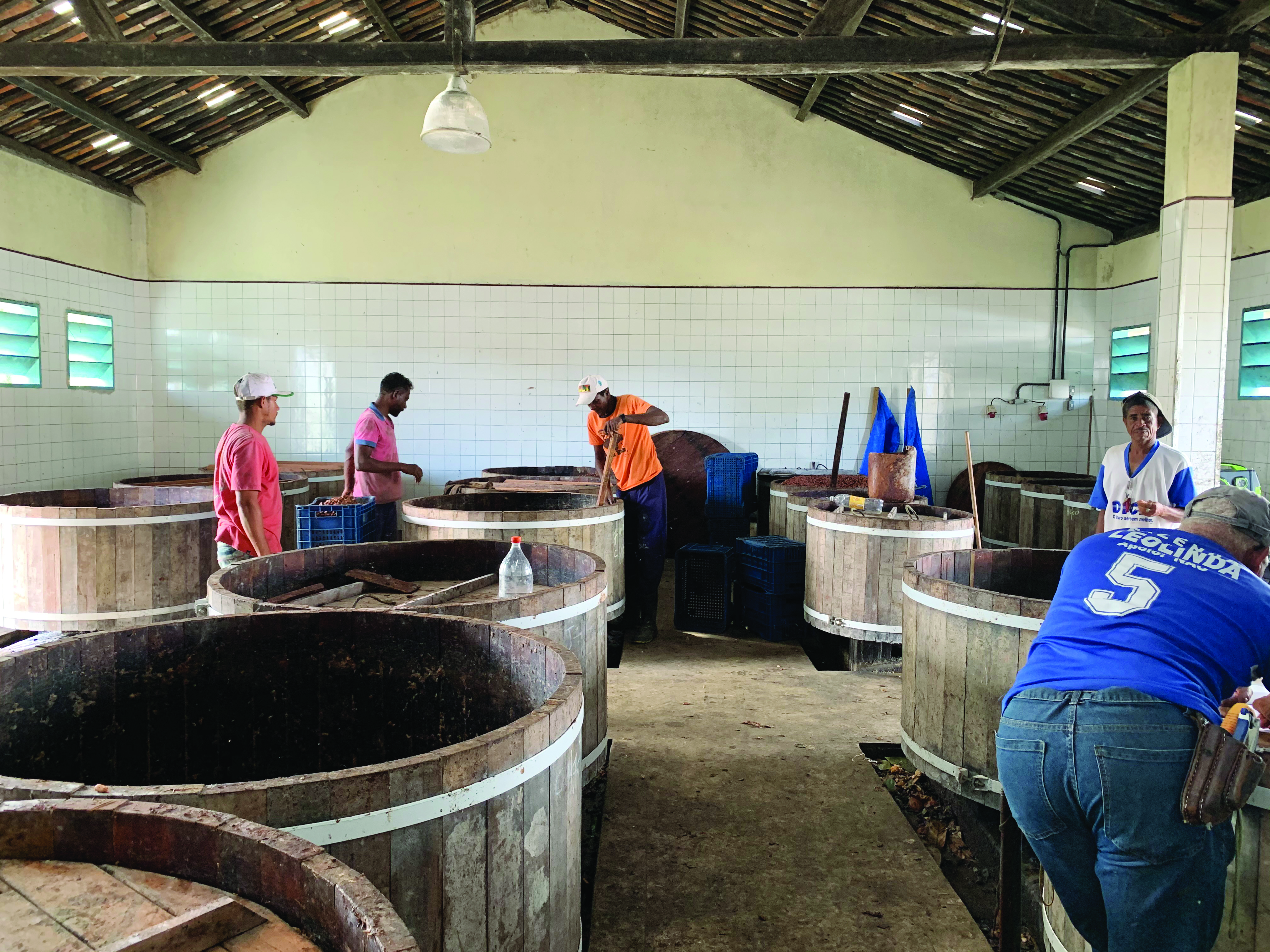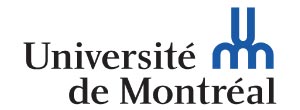A sweeter cycle
Individual and collective initiatives point to an ongoing transformation in the cocoa sector
by Mariana Weber
Originally from the Amazon, cocoa had great importance in Brazil’s economy in the past, which was once its second-largest producer in the world. Currently, the country occupies the seventh position, accounting for a 4% production and standing out for the relevant presence in all the chocolate production chain links: the cocoa grower, the almond processing industry, the food industry, and a broad consumer market. Today’s challenge is to regain the relevance of Brazilian cocoa in a sustainable way — both from an environmental and socioeconomic perspective.
There are collective actions in this sense, such as Cocoa Action Brasil, a coalition launched by the industry to foster its development. All in parallel with individual efforts, focusing on quality, that stand out here and abroad.

Cacau, fruit from the Amazon. Below, João Tavares, third generation producer in the south of Bahia, who has invested in quality and has been winning international awards, such as the Paris Chocolate Salon
João Tavares, from Fazenda Leolinda, in Ilhéus, Bahia, made the national product go far — more precisely, Alain Ducasse’s chocolatery in Paris. He also made the French chef travel to Brazil to personally taste the fruit and cocoa seeds — an event recorded in the documentary The Quest of Alain Ducasse, directed by Gilles de Maistre in 2017. Tavares won the Cocoa of Excellence twice, which awards high-quality cocoa at the Salon du Chocolat in Paris. All derived from a quality investment that began almost two decades ago. João, the third generation of a family of cocoa growers, like many producers in southern Bahia, had the crop devastated by the witches’ broom fungus and saw its production reduced to a quarter of its original volume. The lack of gain in volume leads him to decide to look for ways to add value to almonds by improving processing methods, such as fermentation and drying. Next, Tavares began to sell to the chocolatery Nugali, from Santa Catarina, and then to Nespresso, which served the squares of chocolate of origin, to accompany its coffees – Fazenda Leolinda 74% was among them. The venture gained enough visibility to close a partnership with Belgian chocolate maker Pierre Marcolini and Ducasse himself.
Today, cocoa, planted in the middle of the Atlantic Forest using the most traditional Bahia system (known as cacao-cabruca system), receives 70% to 130% more against the commodity’s primary value. “When I started this job of improving quality, no one did it in Brazil,” he recalls. “In recent years, fine cocoa production is gaining robustness; it is a market trend. Thus, the image of the country in this area is the best possible.”

In the domestic market, João sells to Danke, the chocolate brand the businessman Ernesto Neugebauer designed in 2020. Although Bahia is the most traditional cocoa production center globally, The Amazon, where the plant originated, is the fastest-growing center. Therefore, Ernesto decided to set up his factory there, more precisely in the municipality of Medicilândia, in Pará, on the Trans Amazonian highway. This highway runs more than 4,000 kilometers from east to west of Brazil. He can buy directly from small cocoa growers, producing in the agroforestry system, pay an extra value for quality, and offer technical guidance for field and post-harvest improvements. The plant has the structure to serve Danke itself and sell by-products —cocoa slurry, cocoa powder, and butter— to other industries. “We are the only non-timber company on the highway,” he says.
Brazil has about 70,000 primarily small and medium cocoa producers. According to Anna Paula Losi, executive director of the National Association of Cocoa Processing Industries (AIPC), one of the industry’s biggest challenges is to provide technical assistance and credit to cocoa growers. “We need to increase productivity to meet the manufacturing industry installed here and even export in the future. We have a milling capacity of 275,000 tons, but in 2020 the country produced only 174,000 tons,” he says. “The fine and special cocoa has had increased production, but it will not reach these numbers. It is a small thing even on a global level.”
“The industry has made global corporatecommitments – social, economic, and environmental – and now it has to deliver. Thus, if there is demand for sustainablecocoa, production has to offer”
Today, to meet the demand of national industry, the country buys cocoa to process. “Brazil is the fifth country with the highest volume of chocolate sales in retail, according to data from Euromonitor,” says Ubiracy Fonseca, president of the Brazilian Association of the Chocolate, Peanut, and Candy Industry (Abicab). “Besides, we export chocolates to 145 countries, and Argentina is the main destination.”
The Cocoa Action Brasil launched in 2018 is a project supported by the World Cocoa Foundation and funding from eight companies — Barry Callebaut, Cargill, Dengo, Harald, Mars Wrigley, Mondelēz International, Nestlé, and Olam — aimed at developing the cocoa chain in the country. “It is a public-private initiative to promote sustainability in cocoa farming,” explains communication coordinator Maria Fernanda Brando. “The idea is to involve the industry in discussions about priority issues with other links in the chain, such as entities and representatives of producers, research, certifications, and NGOs.”

Chef Alain Ducasse on his visit to Bahia; Danke factory, in Medicilândia, Pará. Medium: 2nd Annual Cocoa Forum promoted by CocoaAction Brasil; Anna Paula Losi, AIPC; Ernesto Neugebauer, Danke; Ubiracy Fonseca, president of Abicab.
The plan expected to be implemented this year is a result of this dialogue. It has several action lines focused on grower’s technical training, cooperative strengthening, and credit access promotion. “The priority is to promote cocoa productivity sustainably, considering economic, more profitable for the producer, and environmental aspects, with satellite mapping.”
In partnership with the International Labor Organization (ILO), another front develops strategic guidelines to improve working conditions in cocoa farming. “That is a challenge due to a lot of informal work and land issues.”

Vats for cocoa fermentation, are rounded to maintain a homogeneous temperature throughout the container
According to Maria Fernanda, there is a transformation underway in the sector. “The concern with cocoa grown in agroforestry, the producer profitability to live better are topics that have begun to be discussed in recent years and are gaining momentum,” he says. “The industry has made global corporate commitments — social, economic, and environmental — and now it has to deliver. Thus, if the industry demands sustainable cocoa, production has to offer.”

Partners:

Sign up and download the new edition of Explore Magazine!
Share:



